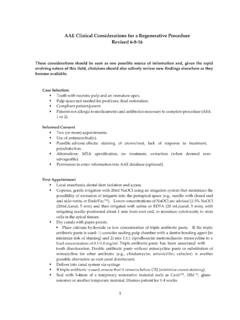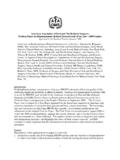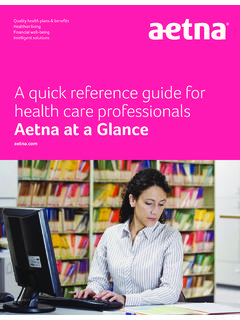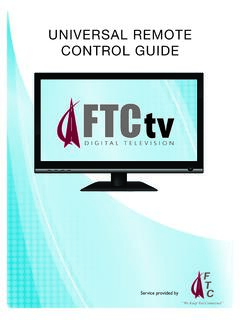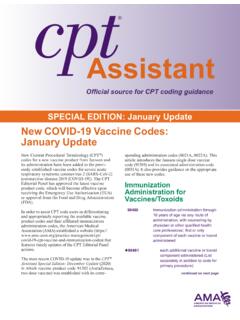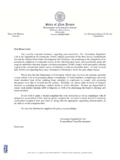Transcription of Endodontists’ Guide to 2017
1 211 E. Chicago 1100 Chicago, IL Guide to CDT 2017 INCLUDES:Frequently Used Codes for Endodontic ProceduresCode ScenariosICD-10/Medical Claim CodingCurrent Dental Terminology, 2017 American Dental Association. All rights reserved. American Association of Endodontists | Endodontists Guide to CDT 20172 ContentsIntroduction 3 Section I: Frequently Used Codes for Endodontic procedures 4 14 Section II: code Scenarios 15 32 Section III: ICD-10/Medical Claim Coding 33 35 Section I.
2 Frequently Used Codes for Endodontic Procedures3 IntroductionThe Endodontists Guide to CDT 2017 was developed by the American Association of Endodontists for endodontists and their office staff. The Guide is designed to supplement the American Dental Association s CDT 2017: Current procedure codes by illustrating the proper use of procedural codes commonly encountered in an endodontic practice The CDT is revised annually, and effective January 1, 2017, dental practices are expected to use CDT 2017 in claims submissions The Guide includes all endodontic CDT codes (D3000-D3999) and a selection of other codes commonly used by endodontic practices However, the Guide does not include all CDT codes that an endodontic practice might use The Guide includes a new section, ICD-10/Medical Claim Coding to assist in filing dental claims with medical insurers The AAE strongly encourages endodontic practices to purchase the ADA CDT 2017 If a dental insurance claim is filed using an outdated version of CDT, it will be delayed or even denied.
3 In addition, the ADA s Guide includes important information on completing the ADA dental claim form medical codes The Guide does not contain any changes to endodontic codes The code change most likely to be used by endodontic practices is:D9311 consultation with a medical health care professionalThe AAE has additional online resources available for members on dental benefit plans and claims processing CDT codes and terminology are the copyright property of the American Dental Association and are used with permission All other content is copyright property of the American Association of Endodontists No portion of this publication may be used without permission The AAE wishes to thank the AAE Practice Affairs Committee for their work on this publication and their ongoing advocacy on behalf of AAE members on coding-related Dental Terminology.
4 2017 American Dental Association All rights reserved Section IFrequently Used Codes for Endodontic ProceduresSection I: Frequently Used Codes for Endodontic Procedures5 code on Dental procedures and Nomenclature (CDT)These represent the dental codes used most frequently by endodontists, effective for the period January 1, 2017-December 31, 2017 When nomenclature includes a by report notation, attach a detailed narrative explaining the treatment completed Information in italics was provided by the Diagnostic D0100-D0999 Clinical Oral EvaluationsThe codes in this section recognize the cognitive skills necessary for patient evaluation The collection and recording of some data and components of the dental examination may be delegated.
5 However, the evaluation, diagnosis and treatment planning are the responsibility of the dentist As with all ADA procedure codes , there is no distinction made between the evaluations provided by general practitioners and specialists. Report additional diagnostic and/or definitive procedures periodic oral evaluation established patientTypically, this code is not used in an endodontic practice. It generally is used for new patient exams administered by a general dentist or limited oral evaluation problem focusedAn evaluation limited to a specific oral health problem. This may require interpretation of information acquired through additional diagnostic procedures Report additional diagnostic procedures separately.
6 Definitive procedures may be required on the same date as the evaluation Typically, patients receiving this type of evaluation have been referred for a specific problem and/or present with dental emergencies, trauma, acute infections, etc D0150 comprehensive oral evaluation new or establishedTypically this code is not used in an endodontic detailed and extensive oral evaluation problem focused, by reportA detailed and extensive problem-focused evaluation entails extensive diagnostic and cognitive modalities based on the findings of a comprehensive oral evaluation. Integration of more extensive diagnostic modalities to develop a treatment plan for a specific problem is required The condition requiring this type of evaluation should be described and documented Examples of conditions requiring this type of evaluation may include dentofacial anomalies, complicated perio-prosthetic conditions, complex temporomandibular dysfunction, facial pain of unknown origin, severe systemic diseases requiring multi-disciplinary consultation, etc American Association of Endodontists | Endodontists Guide to CDT 20176D0170 re-evaluation-limited, problem focused (Established patient.)
7 Not post-operative visit)Assessing the status of a previously existing condition For example: a traumatic injury where no treatment was rendered but patient needs follow-up monitoring; evaluation for undiagnosed continuing pain; soft tissue lesion requiring follow-up evaluation D0171 re-evaluation post-operative office visitDiagnostic ImagingImage Capture with InterpretationShould be taken only for clinical reasons as determined by the patient s dentist Should be of diagnostic quality and properly identified and dated. Is a part of the patient s clinical record and the original images should be retained by the dentist. Originals should not be used to fulfill requests made by patients or third parties for copies of records D0220 intraoral periapical first radiographic imageD0230 intraoral periapical each additional radiographic imagePost Processing of Image or Image SetsD0393 treatment simulation using 3D image volumeThe use of 3D image volumes for simulation of treatment including, but not limited to, dental implant placement.
8 Orthognathic surgery and orthodontic movement D0394 digital subtraction of two or more images or image volumes of the same modalityTo demonstrate changes that have occurred over time D0395 fusion of two or more 3D image volumes of one or more modalitiesTests and Laboratory ExaminationsD0460 pulp vitality testsIncludes multiple teeth and contralateral comparison(s), as indicated Section I: Frequently Used Codes for Endodontic Procedures7 III. Restorative D2000-D2999 Local anesthesia is usually considered to be part of Restorative procedures A one-surface posterior restoration is one in which the restoration involves only one of the five surface classifications (mesial, distal, occlusal, lingual, or facial, including buccal and labial.)
9 A two-surface posterior restoration is one in which the restoration extends to two of the five surface three-surface posterior restoration is one in which the restoration extends to three of the five surface four-or-more surface posterior restoration is one in which the restoration extends to four or more of the five surface one-surface anterior proximal restoration is one in which neither the lingual nor facial margins of the restoration extend beyond the line angle A two-surface anterior proximal restoration is one in which either the lingual or facial margin of the restoration extends beyond the line angle A three-surface anterior proximal restoration is one in which both the lingual and facial margins of the restorations extend beyond the line angle A four-or-more surface anterior restoration is one in which both the lingual and facial margins extend beyond the line angle and the incisal angle is involved This restoration might also involve all four surfaces of an anterior tooth and not involve the incisal angle Other Restorative ServicesD2940 protective restorationDirect placement of a temporary restorative material to protect tooth and/or tissue form This procedure may be used to relieve pain, promote healing or prevent further deterioration Not to be used for endodontic access closure, or as a base or liner under a restoration D2950 core buildup.
10 Including any pinsRefers to building up of coronal structure when there is insufficient retention for a separate extracoronal restorative procedure. A core buildup is not a filler to eliminate any undercut, box form, or concave irregularity in a preparation D2955 post removalAmerican Association of Endodontists | Endodontists Guide to CDT 20178 VIII. Implant Services D6000-D6199 Local anesthesia is usually considered to be part of Implant Services procedure D6010 surgical placement of implant body: endosteal implantD6011 second stage implant surgerySurgical access to an implant body for placement of a healing cap or to enable placement of an abutment X. Oral and Maxillofacial Surgery D7000-D7999 Extractions (Includes local anesthesia, suturing, if needed, and routine postoperative care)D7140 extraction, erupted tooth or exposed root (elevation and/or forceps removal)Includes removal of tooth structure, minor smoothing of socket bone, and closure, as necessary Surgical Extractions (Includes local anesthesia, suturing, if needed, and routine postoperative care)


